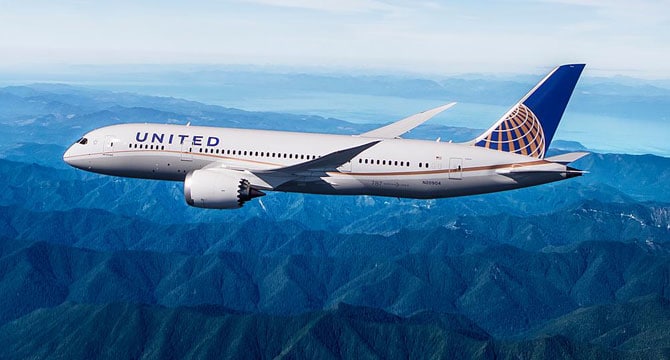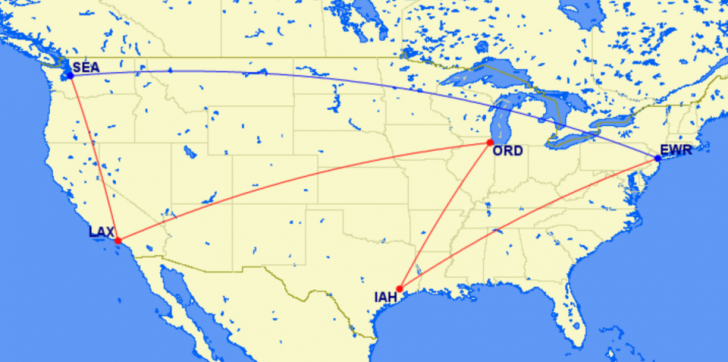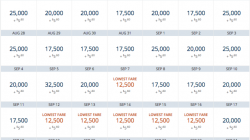A few years ago, Delta Air Lines ditched its award charts. Now United Airlines is doing the same. Award charts are a key measure of accountability for an airline’s frequent flyer program because they represent how much loyalty you need to show to earn a free flight. In its place, United will be using variable award pricing.
Think you’ve got enough miles for that family vacation to Hawaii? Surprise! United can change that price from day to day, and there’s no limit to how high it will go. It’s one thing to limit the amount of award space, but at least you knew what it would cost. All you had to do was be flexible with your dates and plan ahead.
I’ve done this for over a decade and used miles to save hundreds of thousands of dollars. United MileagePlus was even the first program where I earned top tier status. Check out my guide to booking United award tickets while you still can.

Full Announcement
United broke the news to a few bloggers in advance, but the email came later that day. It has a mix of good but mostly bad news:
- For flights on or after November 15, 2019, we’ll no longer publish an award chart listing the set amount of miles needed for each flight.
- Air awards to U.S. and Canadian destinations that are 10,000 to 12,500 miles today may be available for less moving forward. You might have already noticed these lower award prices, and you’ll be able to get them right away.
- Other air award prices may be higher than what you see today, especially if you’re traveling at popular times. This will be effective immediately for travel on or after November 15.
- We’re removing the close-in fee for award travel booked on or after November 15. That means you’ll no longer be charged the extra fee of up to $75 for booking award flights within 21 days of departure.
First, I’m not happy that this change is effective immediately. There’s no way to take advantage of current pricing. The change applies to any flights on or after November 15, 2019, no matter when you book them. Second, the mere possibility of cheaper awards for flights that already cost 12,500 miles or less isn’t that impressive. Maybe I’ll save 5,000 miles on domestic routes. What annoys me is I could be paying 500,000 miles or more on international routes.
The absence of a close-in booking fee is the only real positive, and it’s a no-brainer. Why charge extra to people who are removing the liability of unredeemed miles from your balance sheet and filling up empty seats?
The History of Revenue-Based Awards
For context, frequent flyer programs historically let you earn miles based on the distance you flew, so longer itineraries with connections earned more miles even if you paid a lower price and ended up in the same destination. You could redeem miles in fixed amounts based on zones of travel, so you paid the same amount to go from anywhere in North America to anywhere in Europe.

Maybe it wasn’t the best method, but at least there was some firm and predictable logic in place.
Many airlines have since switched to a revenue-based model when you earn miles. Southwest Airlines and JetBlue have always used one, and Delta was the first legacy carrier to change its approach. United and eventually American Airlines followed. Alaska Airlines is the only U.S. carrier that still lets you earn miles based on how far you fly.
We are now witnessing the transition to a revenue-based model when you redeem miles. Again, Southwest Airlines and JetBlue have always used one, and Delta was the first legacy carrier to switch. Now United looks to be switching, too. American and Alaska are still using traditional zone-based redemptions.
Even United is preserving zone-based redemptions for award travel on its partner airlines in the Star Alliance. This is good news, as those have always been some of the best values for award travel.
You can view United’s interactive award chart by choosing your origin and destination, but it will only apply to partner carriers (indefinitely) and to United flights before November 15. You can also look up prices on the Award Maximizer. One caveat is that they the partner award chart, while it exists in some computer’s memory, is not being published on the website where you can view it.
Awards vs. Rebates
One of the great benefits of traditional award charts is that they allow you to make your own decisions about which redemptions provide the best value for your miles. Some flights require relatively little cash but a lot of miles. Others require relatively few miles but a lot of cash (e.g., first class to Asia). In both cases, the award space is there because the seat was going to go empty anyway.
More award space might be available at a higher price if your dates are not as flexible. Choices exist, and people redeem their miles accordingly.
When a carrier uses a revenue-based model for earning and redemption, there is no more maximization, no more choice. Everyone’s miles are worth the same. Imagine you earn 5 miles per dollar, and you redeem 100 miles for a dollar off a future flight. Five divided by 100 is a 5% rebate.
Airlines typically argue that a fixed rebate allows them to create more award space. But is that better for the customer? I don’t think so.
Gamification of loyalty programs provides the chance to get great value in exchange for tolerating flaws like limited award space. United’s own announcement seems to ignore this, since travelers with flexible schedules can already get the cheapest awards and don’t need this new dynamic pricing.
Increasing award travel prices for the most in-demand flights lets us offer lower prices on other flights. If your award travel is flexible, these updates will help you make the most of your miles.
Remove the game, and you better be prepared to rely on cold, hard math. Ask yourself if you would still be interested in using a United Explorer credit card to earn 2 miles per dollar at a restaurant. In the past, each mile could be worth anywhere from 1 cent to 10 cents when you found the award space you were looking for. You’d accumulate the miles and hold out for those good redemptions.
If you know in advance a mile will be worth exactly 1 cent and never more or less, then it’s better to ditch the airline credit card and switch to a 2% cash-back credit card with no annual fee.
For the million-plus United miles I already have, I’ll be considering some partner redemptions in the near future. When I do need to fly on United, I’ll likely be redeeming miles from other partners like Singapore Airlines or Aeroplan. You can easily acquire these through programs like Ultimate Rewards and Membership Rewards, though Singapore has recently had a few of its own devaluations.
Changes Take Effect Immediately!
New, dynamic award pricing for United flights take effect immediately but only apply to travel on or after November 15, 2019. Like on Delta, we’ll probably see more award tickets that cost 300K, 600K, or even a million miles per person.
The obvious response is to start redeeming now on international partners while the fixed award chart still exists. Eventually United will figure out what math it wants to use to roll out dynamic pricing to them, too. But we won’t see them rush because partner award space has the most restrictive inventory and is typically re-sold at a very low cost.
I’m in a bit of a pickle with my new home in Austin, but fortunately Lufthansa is starting nonstop service here from Frankfurt. Mostly likely we’ll be taking the baby on his first international trip to Germany next year to escape SXSW. If not, I’ll get myself to a coastal gateway like Los Angeles or San Francisco with a regular ticket (I worry that mixing in a United segment will invoke dynamic pricing) and then redeem miles to get from there to Asia. Don’t forget that new service from Singapore to Seattle!




